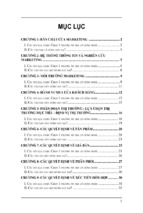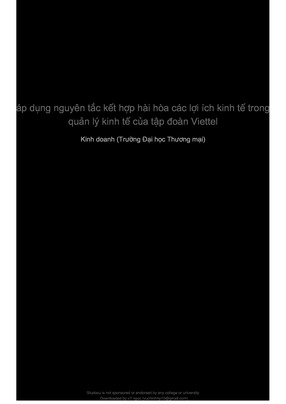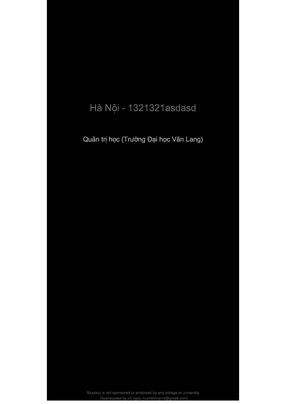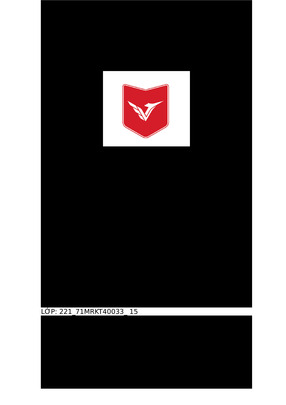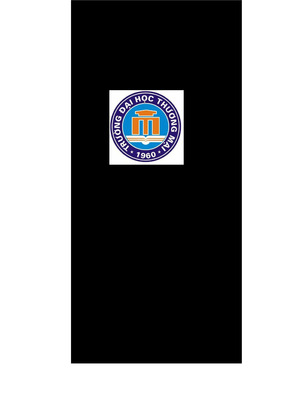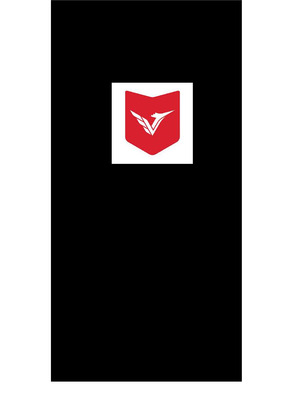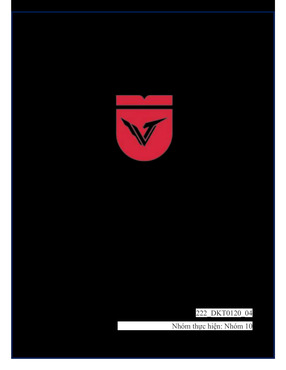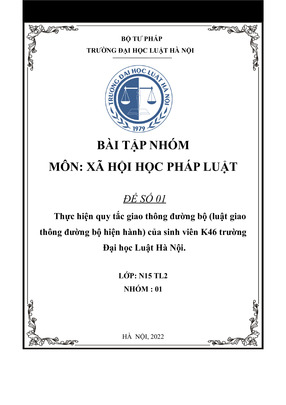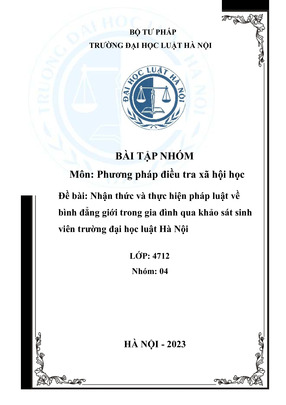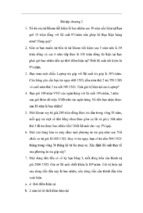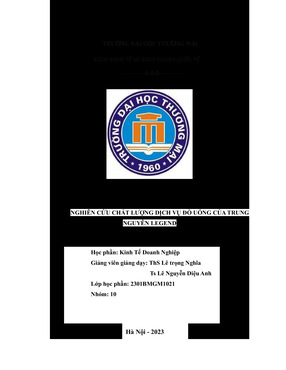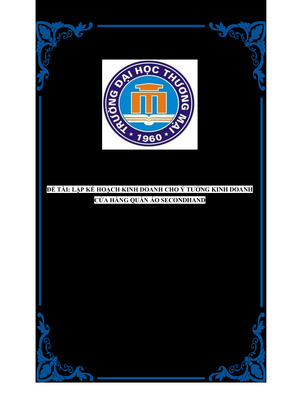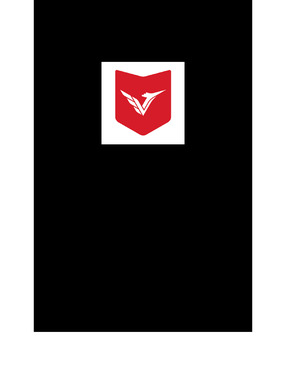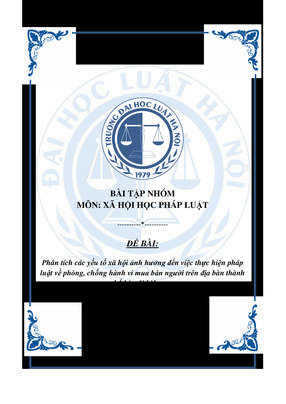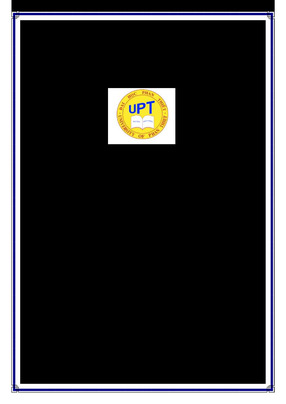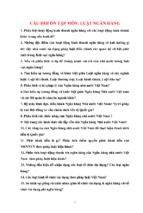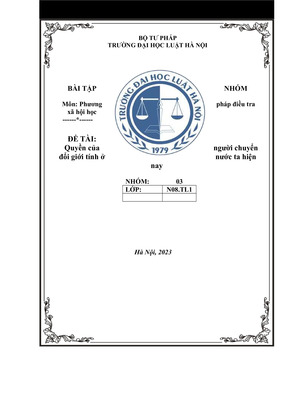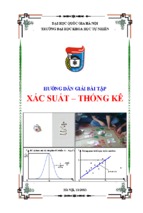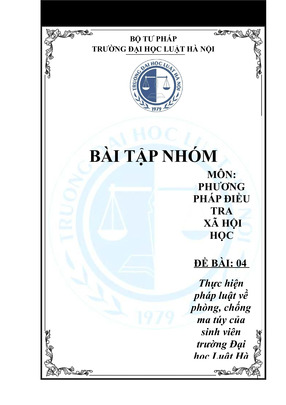TeAM
YYeP
BUSINESS G
Digitally signed by TeAM
YYePG
DN: cn=TeAM YYePG,
c=US, o=TeAM YYePG,
ou=TeAM YYePG,
[email protected]
Reason: I attest to the
accuracy and integrity of
this document
Date: 2005.04.20
19:31:36 +08'00'
ECONOMICS AND
MANAGERIAL
DECISION MAKING
Trefor Jones
Manchester School of Management
UMIST
4
PART I g CORPORATE GOVERNANCE AND BUSINESS OBJECTIVES
INTRODUCTION
Firms are major economic institutions in market economies. They come in all shapes
and sizes, but have the following common characteristics:
g
g
g
g
g
g
Owners.
Managers.
Objectives.
A pool of resources (labour, physical capital, ¢nancial capital and learned skills and
competences) to be allocated roles by managers.
Administrative or organizational structures through which production is
organized.
Performance assessment by owners, managers and other stakeholders.
Whatever its size, a ¢rm is owned by someone or some group of individuals or organizations.
These are termed shareholders and they are able to determine the objectives and
activities of the ¢rm. They also appoint the senior managers who will make day-to-day
decisions. The owners bear the risks associated with operating the ¢rm and have the
right to receive the residual income or pro¢ts. Where ownership rights are dispersed,
control of the ¢rm may not lie with the shareholders but with senior managers. This
divorce between ownership and control and its implication for the operation and
performance of the ¢rm is at the centre of many of the issues dealt with in this book.
OWNERSHIP STRUCTURES
The dominant model of the ¢rm in Western economies is the limited liability company
owned by shareholders, but the form varies signi¢cantly between countries. In some
countries the control rights of the owners are limited by powers given to stakeholders
who may share in the appointment and supervision of managers and in the determination of the enterprise’s objectives. In Germany, for example, large companies recognize
the role of workers and other groups by giving them half the positions on the
supervisory board that oversees the management board (Douma 1997). There are also
¢rms owned by members and operated as co-operative or mutual enterprises and some
owned by national and local government.
The notion that privately owned enterprises should be run in the interests of shareholders is not a characteristic of companies in all advanced economies. Yoshimori
(1995) proposed that shareholder companies can be classi¢ed as follows:
g
g
Monistic ^ where the company serves a single interest group, normally shareholders. These types of companies are commonly found in the UK and the USA.
Dualistic ^ where the company serves two interest groups. Shareholders are the
CHAPTER 1 g OWNERSHIP CONTROL AND CORPORATE GOVERNANCE
g
5
primary group but employees’ interests are also served. These types of companies
are commonly found in France and Germany.
Pluralistic ^ where the company serves the interests of stakeholders in the company
and not just shareholders. Employee and supplier interests may be paramount.
Such companies are found in Japan.
Since Yoshimori’s study some commentators have argued that there has been some
degree of convergence between European and Anglo-American forms of corporate
organizations because of greater international competition between enterprises.
Likewise, commercial and economic forces in Japan have put signi¢cant pressure on
companies to reduce the emphasis on the long-term employment of sta¡ and place
greater emphasis on pro¢tability.
PATTERNS OF SHAREHOLDING
The pattern of share ownership varies between countries and with time. In the UK and
the USA, ownership is more widely dispersed than in continental Europe and Japan
where it is more concentrated.
UK share ownership
Table 1.1 presents data on share ownership in the UK from 1963 to 2001.
Table 1.1
Owners
Individuals
Institutions
Of which:
Pension funds
Insurance companies
Companies
Overseas
Others
Total
Shareholding in the UK
1963
(%)
1975
(%)
1989
(%)
1994
(%)
1997
(%)
2001
(%)
54.0
30.3
37.5
48.0
20.6
58.5
20.3
60.2
16.5
56.3
14.8
50.0
6.4
10.0
5.1
7.0
3.6
100.0
16.8
15.9
3.0
5.6
5.9
100.0
30.6
18.6
3.8
12.8
4.3
100.0
27.8
21.9
1.1
16.3
3.1
100.0
22.1
23.6
1.2
24.0
2.0
100.0
16.1
20.0
1.0
31.9
2.3
100.0
Source Compiled by author using data from:
CSO (1993) Share register survey 1993, Economic Trends, No 480, London, HMSO
CSO (1995) Share Ownership, London, HMSO
CSO (1999) Share ownership, Economic Trends, No 543, London, HMSO
National Statistics (2002) Share Ownership 2001, http://www.statistics.gov.uk
6
PART I g CORPORATE GOVERNANCE AND BUSINESS OBJECTIVES
Table 1.2
Structure of share ownership in Europe 2000
Type of investor
Individuals
Private ¢nancial enterprises
Private non-¢nancial organizations
Public sector
Foreign investors
Unidenti¢ed
Total
France
(%)
Germany
(%)
Italy
(%)
Spain
(%)
UK
(%)
8
29
21
6
36
16
18
40
6
20
25
20
25
15
15
30
14
20
0
36
100
100
100
100
16
48
3
0
32
1
100
Source Compiled by author using data from FESE (2002) Share Ownership Structure in Europe 2002, Brussels,
http://www.fese.be
The key features are:
g
g
g
g
The largest group of domestic owners of company shares are ¢nancial institutions.
Financial institutions’ share of ownership increased between 1963 and 1997, but
fell to 50% in 2001.
Individual ownership of shares has been in long-term decline and fell to 14.8% in
2001.
Overseas ownership of UK companies has increased and stood at 31.9% in 2001.
This trend re£ects the growing internationalisation of the asset portfolios held by
¢nancial institutions.
Shareholding in Europe
Comparative data for the ownership of shares in France, Germany, Italy, Spain and the
UK for the year 2000 are presented in Table 1.2. It shows that in each country the
structures are di¡erent in broad terms compared with the UK:
g
g
g
g
Holdings by ¢nancial institutions are lower.
Holdings by non-¢nancial companies are more important, particularly in Germany.
Individual ownership is more important in Italy and Spain, but less so in France.
Foreign owners are more important in France and Spain, but less signi¢cant in
Germany and Italy.
CLASSIFYING FIRMS AS OWNER OR MANAGEMENT CONTROLLED
The pattern of share ownership at company level varies widely. In the UK, quoted
companies ownership is generally described as being widely dispersed among large
numbers of shareholders. The largest shareholder often owns 5% or less of the stock
CHAPTER 1 g OWNERSHIP CONTROL AND CORPORATE GOVERNANCE
and a signi¢cant proportion is owned by non-bank ¢nancial institutions. The board of
directors typically own a tiny proportion of the shares, often much less than 0.5%.
Thus, managers rather than owners control many medium and large-sized companies
and set the ¢rm’s objectives. In France and Germany shareholding tends to be more
concentrated with greater blocks of shares held by companies and banks. According to
Denis and McConnell (2003) concentrated ownership structures are more likely to be
found in most countries in contrast to the dispersed ownership patterns that are
typical only of the UK and the USA.
How then can companies be classi¢ed as owner or managerially controlled? If a
single shareholder holds more than 50% of the stock, assuming one vote per share,
then they can outvote the remaining shareholders and control the company. If the
largest shareholder owns slightly less than 50% of the equity then they can be
outvoted if the other shareholders formed a united front. If the majority of shareholders
do not form a united front or do not vote, then an active shareholder with a holding of
substantially less than 50% could control the company.
Berle and Means (1932), who ¢rst identi¢ed the divorce between ownership and
control, argued that a stake of more than 20% would be su⁄cient for that shareholder
to control a company but less than 20% would be insu⁄cient and the company would
be management-controlled. Radice (1971) used a largest shareholding of 15% to
classify a ¢rm as owner-controlled; and a largest shareholder owning less than 5% to
classify a ¢rm as managerially controlled. Nyman and Silberston (1978) severely
criticized the ‘‘cut-o¡ ’’ or threshold method of assessing control and argued that the
distribution and ownership of holdings should be examined more closely. They
emphasized that there was a need to recognize coalitions of interests, particularly of
families, that do not emerge from the crude data.
Cubbin and Leech (1983) also criticized the simple cut-o¡ points for classifying
¢rms. They argued that control was a continuous variable that measures the
discretion with which the controlling group is able to pursue its own objectives
without being outvoted by other shareholders. Management controllers, they argued,
would be expected to exhibit a higher degree of control for any given level of shareholding than would external shareholders.
They then developed a probabilistic voting model in which the degree of control is
de¢ned as the probability of the controlling shareholder(s) securing majority support
in a contested vote. Control is de¢ned as an arbitrary 95% chance of winning a vote.
This ability depends on the dispersion of shareholdings, the proportion of shareholders
voting and the probability of voting shareholders supporting the controlling group.
The likelihood of the controlling group winning increases as the proportion voting
falls and the more widely held are the shares. Applying their analysis to a sample of
85 companies, they concluded that with a 10% shareholder turnout, in 73 companies
less than a 10% holding was necessary for control and in 37 companies with a 5%
turnout, less than a 5% holding was necessary for control.
Control of a company is therefore a function of the following factors:
g
g
g
The size of the largest holding.
The size and distribution of the remaining shares.
The willingness of other shareholders to form a voting block.
7
8
PART I g CORPORATE GOVERNANCE AND BUSINESS OBJECTIVES
g
the willingness of other shareholders to be active and to vote against the controlling
group.
Case Study 1.1 Manchester United – owner or
managerially controlled?
Manchester United epitomizes the conflicts between commercialization and the influence
of supporters. The club’s origins lie in the formation of a football team by the workers of the
Yorkshire and Lancashire Railway Company. It joined the Football League in 1892 in its
fourth year of existence. The club finished bottom in their first two seasons and became
founder members of the second division. However, since returning to the first division in
1906 and winning the title in 1909, they have played only 10 seasons in a lower division.
Until the early 1960s, no shareholder had overall control of the club. In 1958, Louis
Edwards, a Manchester businessman was elected to the board at the behest of the then
manager Matt Busby. This was at the end of the most successful period in the club’s
history having been League champions in 1952, 1956 and 1957. In 1962 he was elected
chairman owning only 17 of the 4,132 issued shares. By 1964, he had acquired a majority
and controlling interest in the club. In 1981 his son Martin became chief executive of the
club. In 1989, Martin tried to sell his complete interest in the club to Michael Knighton for
£20m, but the deal fell through. In 1991 the club was floated on the stock exchange. This
led to the most successful period in the club’s playing history. It won the first Premier
League title in 1993, five more in the next seven years and the European Cup in 1999 – the
latter a feat they had previously achieved in 1968.
The changing nature of football and the dangers of flotation were highlighted by the
£635m takeover bid made for the club in 1998 by BSkyB. The satellite television station,
40% owned by Rupert Murdoch’s media empire News International, shows live
Premiership football on subscription channels. Payments from television companies are a
significant source of income for the club. The bid was not motivated by the failure of the
club’s management, but by the strategy of BSkyB. It was agreed to by the board of
directors, but was vetoed by the government after a reference to the Monopolies and
Mergers Commission. The bidder was forced to reduce its stake in the company to
below 10%. This left BSkyB owning 9.99% of the share capital and still being the largest
shareholder in the company.
Since flotation, Martin Edwards has gradually reduced his stake in the club to 14% in
1998 and to 0.7% in 2002. The club’s shares are now more widely dispersed with some
20,000 small shareholders owning 3.5% and the directors around 3%. The largest holdings
in September 2002 were:
BSkyB
Cubic Expression
Mountbarrow Investment
Landsdowne Partners
E.M. Watkins
C.M. Edwards
Other directors
%
9.99
8.65
6.54
3.11
2.31
0.70
0.10
In September and early October 2003 there was significant trading, giving the following
estimated structure:
CHAPTER 1 g OWNERSHIP CONTROL AND CORPORATE GOVERNANCE
Cubic Expression Ltd
Malcolm Glazer
Mountbarrow Investment
UBS
Talpa Capital
Landsdowne Partners
Legal and General
E.M. Watkins
Amvesscap
Dermot Desmond
Shareholders United
Other investment companies
Ordinary United fans
Others
%
23.2
8.9
6.5
5.9
4.1
3.7
3.3
2.3
1.8
1.6
1.0
16.8
15.0
5.9
(J.P. McManus and John Magnier, Irish
businessmen)
(Tampa Bay Buccaneers, USA owner)
(Harry Dobson, Canadian-based
Scottish businessman)
(Financial institution)
(John de Moi, Dutch television tycoon)
(Financial institution)
(Financial institution)
(United director)
(Financial institution)
(Glasgow Celtic, dominant shareholder)
(Activist group)
To determine whether the club is owner or managerially controlled, we would need to
consider the size of the largest stake, the distribution and size of other holdings including
the directors’ holdings, the motivation for holding the shares and the propensity to vote. The
club was owner-controlled when Martin Edwards was chief executive and the largest
shareholder. There appeared to be a period when the company was managerially
controlled when the board of directors controlled a small proportion of the shares and
the largest shareholders were said to be investors rather than active owners. However,
that position appears to have changed with the emergence of dominant shareholders who
may wish to control the company.
SYSTEMS OF CORPORATE CONTROL
The di¡erences between countries in shareholder ownership patterns in£uence the
nature of their corporate governance systems. According to Franks and Meyer (1992),
there are fundamental di¡erences between the corporate control systems of the UK
and the USA and France, Germany and Japan. The former they describe as outsider
systems and the latter as insider systems. The characteristics that distinguish the
systems are listed in Table 1.3.
Insider systems
Insider systems are characterized by relatively few quoted companies, concentrated
ownership, dominance of corporate and/or institutional shareholders and reciprocal
shareholding. Shares are infrequently traded, but when they are they often involve
large blocks. Takeover activity is largely absent, and where mergers take place they
are largely done by agreement. However, Vodafone did acquire Mannesmann
9
10
PART I g CORPORATE GOVERNANCE AND BUSINESS OBJECTIVES
Table 1.3
Characteristics of insider and outsider systems
Characteristics
UK and USA
Europe and Japan
Listed companies
Trading ownership
Inter-company holdings
Shares
Many
Frequent; liquid capital market
Few
Widely held
Dispersed individuals
Financial institutions
Low
Few
Infrequent; illiquid capital market
Many
Large holdings
Concentrated companies
Concentration of
ownership
High
Source Author
following a hostile bid. These characteristics, it is argued, lead to more active owner
participation. Owners and other stakeholders are represented on the boards of
companies, and there is active investor participation in controlling the company; this
minimizes external in£uences in the control of the company. Ownership lies within the
corporate sector rather than with a multiplicity of individual shareholders. Directors
are representatives of other companies and interest groups, while a two-tier board
structure allows a wider group of stakeholders to o¡er the company a broader
spectrum of advice tending to reinforce longer term goals and stability for the
company. Information about the ¢rm’s problems and performance is available more
readily to corporate or institutional shareholders than to individual shareholders; this
enables them be better informed about the ¢rm’s performance because they have
inside information.
Germany
Germany is an example of an insider system. It has according to Franks and Meyer
(2001) around 800 quoted companies compared with nearly 3,000 in the UK.
Ownership is much more concentrated with 85% of the largest quoted companies
having a single shareholder owning more than 25% of the voting shares. Large
ownership stakes tend to rest in the hands of families or companies with interconnected holdings. Where shares are more widely dispersed then the in£uence of
banks is stronger: for example, the largest shareholder in BMW is the Quandt family
which owns 46% of the voting equity. Stefan Quandt is one of four deputy chairmen,
and his sister Susanne is a member of the supervisory board. Head of the family is
Joanna Quandt, who is the majority owner of Altana, a pharmaceutical manufacturer;
this makes them the controllers of two of Germany’s top 30 companies (Financial Times
16 August 2002). The supervisory board appoints the management board. When the
company’s acquisition of British Leyland was deemed unsuccessful the chairman of
the management board and two other directors were quickly dismissed in early 1999
by insider action.
CHAPTER 1 g OWNERSHIP CONTROL AND CORPORATE GOVERNANCE
Outsider systems
Outsider systems are characterized by dispersed share ownership, with the dominant
owners being nonbank ¢nancial institutions and private individuals. Owners and
other stakeholders are not represented on the boards of companies. Shareholders are
seen as passive investors who only rarely question the way in which a company is
being operated. Shares are easily sold and tend to be held for investment purposes, as
part of a diversi¢ed portfolio, rather than for control purposes; this discourages active
participation in company a¡airs since shares are easily traded. Thus, dissatisfaction
with the performance of a company leads the shareholder to sell shares, rather than
initiate moves to change the management or even company policies.
Dispersed ownership is assumed to mean managerial control; this is particularly
true when ¢nancial institutions hold numerous small stakes. While such institutional
investors may have information advantages, they do not use this to in£uence
management directly but to maintain the value of their investment portfolios on
behalf of clients. The monitoring of managers is said to be superior in insider systems,
with deteriorating performance more quickly acted on. In the outsider system,
changing management and policies is a slower process and may involve the takeover
of the failing business by other enterprises.
CONSTRAINTS ON MANAGERIAL DISCRETION
The degree of discretion that senior executive managers have in setting objectives is
limited by both external and internal constraints. External constraints arise from the
active market in company shares while internal constraints arise from the role of nonexecutive board members and stakeholders, trying to align the managers’ and the
owners’ interests by the rules shaping corporate governance.
External constraints
There are ¢ve sources of external constraint on managerial behaviour in any system of
corporate control. Those who potentially hold this power are:
g
g
g
g
g
Holders of large blocks of shares who use or threaten to use their voting power to
change management or their policies if they become dissatis¢ed.
Acquirers of blocks of shares sold by existing shareholders unhappy with the
performance of management.
Bidders in the takeover process who promise to buy all the voting shares of the
enterprise.
Debtors/Investors, particularly in times of ¢nancial distress, who act to protect their
interests in the company.
External regulators and auditors.
11
12
PART I g CORPORATE GOVERNANCE AND BUSINESS OBJECTIVES
In outsider systems, external control is exercised mainly through the workings of the
stock market rather than voting. In the stock market, shares are continuously traded
and the price re£ects the relative numbers of buyers and sellers and their willingness
to buy or sell. The in£uence of the workings of the stock market on managerial
discretion assumes that a fall in the share price will make management more
vulnerable to shareholder activism either in selling shares or in voting at shareholder
meetings.
In outsider systems, shareholders are inclined to sell underperforming shares to
maintain a balance in their diversi¢ed share portfolios. In insider systems the selling of
shares is more di⁄cult and, therefore, shareholders are more likely to use their voting
power to in£uence management. In outsider systems the working of the stock market
makes it feasible to acquire blocks of shares by purchase and to make a bid for all the
equity of a company, thereby threatening the tenure of the existing management.
Other external constraints on managerial behaviour are the need to comply with
company law, independent auditing of accounts and the lodging of company accounts
with the regulators. The annual accounts of a company are designed to present a
reasonable picture of the company’s activities and its ¢nancial health in terms of pro¢t
and debt levels to actual and potential shareholders. On occasions, audited accounts
have been found to have presented an inaccurate picture, in that a company has gone
bankrupt after the accounts appeared to show a healthy ¢nancial situation. The
bankruptcy of Enron in the USA in 2001 was a notable example.
Internal constraints
Within the organizational structure of the company, there are groups who may be able
to in£uence management to change policies. The ¢rst of these are the non-executive
directors, who are appointed to the boards of UK companies to oversee the behaviour
of the executive directors. However, they are normally appointed by the executive
managers and, therefore, may not be independent in their actions or e¡ective in constraining executive directors. They are often few in number and can be outvoted by
executive directors. One of the objectives of corporate governance reform in the UK is
to make non-executives more e¡ective. In the German system the supervisory board
plays this role by in£uencing the management board, but its membership is more
wide-ranging.
The second of these groups are the owners or shareholders, who can exercise their
authority at meetings of the company or informally with management. Directors are
elected at the annual general meeting of the company. Dissatis¢ed shareholders can
vote against the re-election of existing executive directors or seek to get nominees
elected. They can also vote against resolutions proposed by the executive of the
company, such as those relating to executive remuneration. In the past this has rarely
happened as shareholders have been passive rather than active in company a¡airs and
sell underperforming shares. However, in the UK institutional shareholders have
become more active in organizing coalitions to either in£uence management behind
the scenes or forcing votes at annual general meetings.
A third group that can in£uence executive managers are the stakeholders within
CHAPTER 1 g OWNERSHIP CONTROL AND CORPORATE GOVERNANCE
the company. These include employees of the ¢rm as well as customers, suppliers,
lenders and the local community. They may do this by expressing their criticisms/
concerns either directly to the executives or indirectly by informing shareholders, the
media and outside experts or commentators. Investment banks and stockbrokers o¡er
advice to shareholders on the potential future earnings of the company, and such
comments may help to in£uence attitudes toward incumbent managers.
Aligning the interests of managers and shareholders
It has been argued that the discretion executive managers exercise can be limited by the
development of incentive mechanisms to ensure that the interests of managers and
owners are more closely aligned. If we assume that shareholders wish to maximize
pro¢ts, then managers may be encouraged to do so by the payment of pro¢t-related
bonuses in addition to their basic salary and/or by rewarding successful performance
with share options in the company.
Critics of such schemes argue that senior managers may be motivated by nonmonetary rewards and that it is di⁄cult to devise incentive schemes that only reward
superior performance. A survey by Gregg et al. (1993) explored the relationship
between the direct remuneration (pay plus bonuses) of the highest paid director and
the performance of around 300 companies in the 1980s and early 1990s. They found
that almost all large UK companies had bonus schemes for top executives but that
rewards were weakly linked to corporate performance on the stock market. The
authors concluded that the results called into question the current system of
determining rewards and that the incentive schemes did not successfully align
managerial interests with those of the shareholders. (This aspect is further discussed
as a principal agent problem in Chapter 20.) To achieve the desired alignment
between owners and managers there have been many changes in the UK to corporate
governance rules to prevent the misuse of managerial discretion.
IMPROVING CORPORATE GOVERNANCE IN THE UK
The ¢nal sources of constraint on the behaviour of executive directors are the rules that
determine the governance structures and procedures of companies. The meaning of
the term corporate governance has been much discussed. The Cadbury Committee,
which was set up in 1991 to investigate corporate governance in the UK, de¢ned it as
‘‘the system by which companies are directed and controlled.’’ This de¢nition implies
two aspects to the problem: one relating to the direction of the company and a second
relating to how the company is controlled by shareholders and society. Critics would
narrow the concept by ensuring that corporate actions are directed toward achieving
the objectives of a company’s shareholders. Critics of the narrow de¢nition argue that
corporate governance relates not only to management’s responsibilities to shareholders
but also to stakeholders and the wider community. From a government point of view,
13
14
PART I g CORPORATE GOVERNANCE AND BUSINESS OBJECTIVES
corporate governance is about ensuring accountability in the exercise of power and
¢nancial responsibility, while not discouraging ¢rms from being enterprising and risk
taking.
Across the world, many countries have developed voluntary codes of practice
to encourage good corporate practice. The website of the European Corporate
Governance Network in August 2000 listed codes for 19 countries together with those
agreed by the OECD (Organization for Economic Cooperation and Development) and
various non-governmental organizations (http://www.ecgn.ulb.ac.be). All of the codes
listed have been published since 1994, indicating the growing concern for corporate
governance to be more e¡ective.
In the UK the major concern has been the perception that directors of a company
are only weakly accountable to shareholders. Such concerns include:
g
g
g
g
g
g
g
The collapse of companies whose annual reports indicated they were pro¢table.
The lack of transparency of a company’s activities to shareholders.
The competence of directors.
The adequacy of board structures and processes.
The growth of business fraud.
Payments to directors and senior managers unrelated to performance.
The short-term nature of corporate performance measures.
Three successive committees of inquiry appointed by the London Stock Exchange have
examined these issues. The ¢rst was the Cadbury Committee (1992) which devised a
voluntary code of practice to improve corporate governance. This was reviewed by the
Greenbury (1995) and Hampel (1998) Committees. The end result was the Combined
Code (CCG 1998) which requires each company to have:
g
g
A non-executive chairman and chief executive with a clear division of responsibilities between them.
Each board to have at least:
^ Three non-executive directors independent of management.
^ An audit committee including at least three non-executive directors.
^ A remuneration committee made up mainly of non-executive directors to determine the reward of directors.
^ A nomination committee composed wholly of non-executive directors to appoint
new directors.
In addition the annual report to shareholders should include:
g
g
A narrative account of how they apply the broad principles of the Code, explain
their governance policies and justify departures from recommended practice.
Payments to the chief executive and highest paid UK director to be disclosed in the
annual report.
CHAPTER 1 g OWNERSHIP CONTROL AND CORPORATE GOVERNANCE
g
g
g
g
Directors should receive appropriate training to carry out their duties.
The majority of non-executive directors should be independent, and boards should
disclose in their annual report which of the non-executive directors are considered
to be independent
The roles of chairman and chief executive should normally be separated, and
companies should justify a decision to combine the roles.
The names of directors submitted for re-election should be accompanied by
biographical details, and directors who resign before the expiry of their term
should give an explanation.
A fourth report (known as the Higgs Report) was commissioned by the Department of
Trade and Industry and published in 2003. It proposed a fundamental restructuring of
company boards by proposing that at least half the members should be independent
non-executive directors and that the part-time non-executive chairman should also be
independent of the company. One of the non-executive directors should be responsible
for liaising with shareholders and raising issues of concern at board level. Nonexecutives should normally serve no more than two three-year terms and meet by
themselves at least once per year. In addition, no one individual should chair more
than one major company. These proposals have proved to be extremely controversial.
Critics do not accept the notion that boards having a majority of non-executives will
solve the problems associated with managerial discretion and misuse of power. The
executive directors will still be the main source of information about the performance
of the company and the non-executives will ¢nd it di⁄cult to obtain information from
other sources. In addition, there are doubts expressed as to where the numbers of
independent non-executive directors will be found. The Higgs Committee recognized
this problem and argued that the pool from which individuals are drawn should be
widened and training o¡ered. When agreed, these proposals will be incorporated in a
new combined code.
Although voluntary, compliance with the Code is one of the requirements for listing
on the London Stock Exchange and non-compliance requires an explanation in the
annual company report. The Code, however, does not guarantee good conduct on
the part of executives and compliance with the Code does not necessarily improve the
company’s pro¢tability. In fact, in some circumstances it may adversely a¡ect the
declared pro¢ts of the company by ensuring that costs incurred by the company are
fully declared to owners. Likewise, apparent compliance with the Code may not
prevent fraudulent behaviour on the part of senior executives if that information is
hidden from the non-executive directors on whom a heavy burden for compliance is
placed.
Although companies conform to the letter of the corporate governance codes, it is
questionable whether they fully comply with their spirit and whether such compliance
would prevent fraudulent behaviour. The independence of non-executive directors is
questioned since the vast majority of them are also directors of other companies. Also,
their ability to ful¢l the expectations of the Code and operate the necessary scrutiny of
executive directors is again questionable.
15
16
PART I g CORPORATE GOVERNANCE AND BUSINESS OBJECTIVES
Case Study 1.2
Ownership and governance structures
in UK retailing
The ideal board would under the various codes (pre-Higgs) have the following composition
and duties:
g
g
g
g
A part-time chairman who is not involved in the day-to-day running of the
business, thinks strategically, ensures directors are aware of their obligations to shareholders and makes sure non-executive directors are properly briefed.
Executive directors who manage the company on a day-to-day basis whose
contracts should not exceed three years without shareholder approval, whose pay is
subject to recommendations of a remuneration committee and who may receive share
options.
Part-time non-executive directors who bring independent judgements to bear
on issues of strategy, performance and appointments, who ensure the appropriate
information is disclosed in the directors’ reports and whose reward reflects the time
devoted to their activities.
A chief executive who is the top manager of the company and strives to meet the
objectives set by the board. It is a role separate from that of the chairman to ensure
that no one individual has unfettered power over decisions.
Table 1.4 shows for nine leading UK retailers the shareholdings of the largest shareholder
and the mix of executive/non-executive directors on the boards of the companies. In terms of
largest shareholders, Tesco has no shareholder owning more than 3%, but all the other
companies have at least one shareholder owning more than 3%. In Sainsbury the largest
shareholder controls 29% and seven non-institutional shareholders own 52.3% of the total
equity. In Morrison the largest shareholder, who is also executive chairman, owns 17.76%
Table 1.4 Board structures and shareholding of leading retailers August 2000
Board of directors
———————————————————
Executive
Boots
Debenhams
Kingfisher
Marks & Spencer
Wm Morrison
J Sainsbury
Somerfield
Safeway
Tesco
Notes
6
6
7
61
71
5
71
51
8
Non-executive
7
5
6
5
0
4
4
4
5
Largest
shareholder
Board
Turnover 4
shareholders
Pre-tax
profit 4
(%)
(%)
(£m)
(£m)
Return
on
capital
employed
(%)
4.06
13.0 6
3.95
7.45
17.76 5
29.00 2
17.93 3
13.02
None
0.04
0.13
0.10
0.06
17.85
0.01
0.14
0.07
0.10
5,187
1,379
10,885
8,224
2,970
16,271
5,898
7,659
18,796
562
139
726
418
189
509
209
236
933
25.2
20.1
19.3
8.1
18.0
11.1
24.5
9.24
15.5
1 Includes executive chairman
2 Seven non-institutional shareholders have stakes in excess of 3% totalling 53.2% of equity
3 Six shareholders have stakes in excess of 3% totalling 48.64%
4 Financial year ending March/April 2000 except for Somerfield which is for 1999
5 Four individual shareholders have stakes in excess of 3% totalling 39.79%
6 Four institutional shareholders have stakes in excess of 3% totalling 32.26%
Source Author’s analysis of annual reports
CHAPTER 1 g OWNERSHIP CONTROL AND CORPORATE GOVERNANCE
who with another three individuals own 39.7%. In both these companies the largest shareholders are members of the Morrison and Sainsbury families. Somerfield, Debenhams and
Safeway have a significant single institutional shareholder owning more than 12% of all
shares, while the first two companies have a small group of significant shareholders
controlling more than 30% of the total. Marks & Spencer, Kingfisher and Boots also have
institutional shareholders as their largest single shareholder, but their stakes are relatively
small, less than 5% in the case of Kingfisher and Boots. The boards of directors, with the
exception of Morrison, all own less than 0.2% of the total equity.
On balance Sainsbury and Morrison are family or owner-controlled; Tesco, Boots,
Kingfisher and possibly Marks & Spencer are management-controlled; and the other
three companies have significant institutional holdings which probably means they are
management-controlled. However, poor performance can lead to significant changes in
management. At Marks & Spencer a new chairman and chief executive were appointed
in 1999, while Somerfield, which performed poorly after its merger with Kwik Save, came
under significant shareholder pressure to improve performance.
All boards, except for Boots, have a majority of executive directors. Contrary to the
codes of practice, Marks & Spencer, Morrison, Safeway and Somerfield have executive
rather than non-executive chairmen. One firm, Morrison, in contravention of the codes, has
no non-executive directors while all the others have three or more non-executive directors.
Case Study 1.3 Corporate governance in
English football
The issues raised in this chapter concerned with ownership and control can be illustrated in
relation to professional football. Professional football clubs were traditionally private limited
companies. These were owned and run either by a single or a small group of individuals.
The clubs developed a relationship with the local community and, particularly, their
supporters who pay to watch matches. The objective of football clubs was not to make
profits but to achieve the best league result possible, given the income of the club from
football and the money contributed by the owners. Owners were expected to put funds into
their clubs with little expectation of a commercial return.
Few clubs made profits on any consistent basis, and the majority made persistent
losses. Of 40 League clubs listed by Szymanski and Kuypers (1999) in the period 1978 to
1997 only six were profitable, on average, for the whole period. These were Liverpool,
Manchester United, Arsenal, Tottenham, Aston Villa, Oldham and Barnsley. The majority
of clubs were perceived to be poorly managed and to have failed to keep up with changing
social trends. Since the clubs were non-quoted companies there was no market in
corporate control. While many clubs were bankrupt in the technical sense, they
staggered on with the support of a changing cast of money providers, but better
management and profitability were rarely the result.
The stakeholders in the clubs – the fans, the players, the staff and the local
community – played no part in the running of the club. The fans who paid to watch their
teams play were generally taken for granted by the clubs, facilities were limited and
attendance declined, as football became one choice among a range of leisure options,
was associated with violence of various kinds and offered poor value for money. The
various stakeholders in a football club also have conflicting objectives. For example:
g
Owners of Stock Exchange-quoted clubs might be interested in maximizing profits,
football success and charging fans high admission prices.
17
18
PART I g CORPORATE GOVERNANCE AND BUSINESS OBJECTIVES
g
g
g
g
g
Owners of private clubs might be interested in minimizing losses, relative football
success (e.g., avoiding relegation) and keeping fans happy.
In a mutual, or fan-controlled, club the controllers/owners might seek to avoid losses,
relative football success and low admission prices.
Manager and players, given their abilities, are also interested in maximizing their
earnings and football success, though their commitment to any one club might be
for a short period only.
Fans are interested in football success, a reasonable quality stadium and low
admission prices.
The community might be interested in football success, minimizing community
disruption and encouraging the club to get involved in community projects.
(see Michie and Ramalinghan 1999 for further discussion). The turning point in making
football in England a commercial activity came with the publication of the Taylor Report
in 1990 into the Hillsborough Stadium disaster of 1989. It recommended that all First and
Second Division club grounds should become all-seater stadiums. This was quickly
followed by the formation of the elite Premier League as a separate entity from the
Football League. These two changes have led to:
g
g
g
g
Increasing crowds despite higher prices.
Increased exposure of football on television, further widening the revenue base,
The growth of wider commercial activity such as the selling of football kits.
The non-sharing of home match receipts with visiting teams, enabling the larger
clubs to increase their revenues.
As a result of increased revenue and the social acceptance of Premiership football, a small
number of clubs become Stock Exchange-listed companies. Tottenham Hotspur became
listed in 1983, but no other club followed until Manchester United did so in 1993. Now the
majority of Premier League clubs are listed companies, leading to a greater emphasis on
profitability and good stewardship, which at times conflicts with the need to be successful
on the field of play.
Traditional supporters have been critical of these changes because they argue that,
without their support, the football club would be of little value to the shareholders. The
inelasticity of demand to watch the top teams and the limited capacity of grounds have
given clubs significant market power to raise prices and revenue and to put shareholder
value ahead of football success. Some have argued that the fans should be represented on
the board of directors, while others have argued the football clubs should adopt co-operative
or mutual structures to ensure they maintain their traditional role as a sports club rather than
a purely commercial enterprise: for example, Barcelona, one of the most successful football
teams in Europe, is still a club with real links with its community and supporter base.
Stock market flotation has widened the range of shareholders to include financial
institutions and in more recent times, media companies particularly those involved in
satellite and cable television. The bid by BSkyB Television for Manchester United brought
many of these issues into the public arena. The prohibition of the merger by the Monopolies
and Mergers Commission (MMC) has not ended the involvement of media companies,
which changed their strategy from owning a single club to owning minority stakes in a
number of clubs. The decision also ended the bid by NTL, a cable television company, for
Newcastle United. The motivation for media companies seeking ownership stakes in major
football clubs is to be able to influence negotiations about media rights, to advise on media
development and to be involved in the development of club-based pay-per-view television
services.
CHAPTER 1 g OWNERSHIP CONTROL AND CORPORATE GOVERNANCE
CHAPTER SUMMARY
In this chapter we explored issues relating to the ownership and control of the ¢rm. To
do this we analysed:
g
g
g
g
The ownership structures of ¢rms and the pattern of shareholdings in di¡erent
countries.
The divorce between ownership and control led to the distinction between owner
controlled and managerially controlled enterprises.
The nature of control in di¡erent countries was examined. In the UK and the USA,
where share ownership is widely dispersed, there are outsider systems of control
using market mechanisms. In continental Europe and Japan, where share ownership is more concentrated, there are insider control systems. In whose interests
¢rms are operated was also examined.
The major constraints on managerial discretion come through either external
mechanisms, essentially through the Stock Exchange, or internal constraints
where shareholders and stakeholders use their power of control within the formal
and informal structures of the ¢rm.
REVIEW QUESTIONS
Exercise 1
Share ownership
Using a sample of company annual reports extract information on the following:
a
b
c
d
e
The distribution of shares by size of holding.
The category of shareholders (e.g., banks, individuals, etc.) which are the main
owners.
The largest shareholder.
Whether there is a coherent group of shareholders.
The shareholdings of directors.
Based on the information collected, would you describe each company as either management or owner-controlled?
Exercise 2
Corporate governance compliance
Using a sample of company reports examine the corporate governance report:
a
b
Does the report give evidence of compliance with latest code of practice?
Do any of the ¢rms fail to comply with the latest code. If yes, in what respect do they
fail to do so and what justi¢cation did the company give for its actions?
19
20
PART I g CORPORATE GOVERNANCE AND BUSINESS OBJECTIVES
Discussion questions
1 What is understood by the terms ownership and control?
2 What do you understand by the term ‘‘divorce between ownership and control’’?
3 What size of ownership stake makes for control? How do we divide companies into
managerial or owner-controlled? Is the use of a simple percentage cut-o¡ rule too
simplistic?
4 How does the growth of institutional shareholdings in£uence the way managers
run a company? Would we expect them to adopt a passive or active role in monitoring a company?
5 Distinguish between ‘‘insider’’ and ‘‘outsider’’ systems of corporate control? What
are the advantages and disadvantages of both systems?
6 How does the pattern of ownership and control vary between the UK and Germany?
7 Compare and contrast the degree of managerial discretion of a chief executive of a
large company in an insider and outsider system of corporate control.
8 What are the main guidelines in the UK’s corporate governance codes? Have they
improved corporate governance in the UK?
9 Is football di¡erent? Is the listed company an appropriate organizational form or
should they remain members’ clubs?
10 Companies A, B and C have the following share ownership structure:
^ Firm A: the largest shareholder is an individual owning 10% of the equity, a
further ¢ve members of the family own 25%, with the remaining shares owned
by ¢nancial institutions and with no one institution owning more than 3%. The
board of directors does not include the largest shareholder but does control 10%
of the equity.
^ Firm B: the largest shareholder is an institution owning 3% of the equity. The
remaining shares are owned by 20,000 individual and institutional shareholders.
^ Firm C: the largest shareholder is an individual owning 40% of the equity. A
single bank owns 20% and three companies the remaining 40%.
Classify each ¢rm according to whether it is owner or managerially controlled
and whether it is likely to be part of an insider or outsider system of corporate
governance.
REFERENCES AND FURTHER READING
Berle, A.A and G. Means (1932) The Modern Corporation and Private Property. Macmillan, New
York.
Cadbury, A. (1992) The Financial Aspects of Corporate Governance. London Stock Exchange.
CCG (1998) The Combined Code. Committee on Corporate Governance, London Stock Exchange/
Gee & Co., London.
Conyon, M., P. Gregg and S. Machin (1995) Taking care of executive compensation in the UK.
Economic Journal, 105(2), 704^714.
Cubbin, J. and D. Leach (1983) The e¡ect of shareholding dispersion on the degree of control in
British companies: Theory and measurement. Economic Journal, 93, 351^369.
CHAPTER 1 g OWNERSHIP CONTROL AND CORPORATE GOVERNANCE
Denis, D.K. and J.J. McConnell (2003) International corporate governance. Journal of Financial and
Qualitative Analysis, 38(1), 1^36
Douma, S (1997) The two-tier system of corporate governance. Long Range Planning, 30(4),
612^614.
Franks, J. and C. Meyer (1990) Corporate ownership and corporate control: A study of France,
Germany and the UK. Economic Policy, 100, 189^232.
Franks, J. and C. Meyer (1992) Corporate Control: A Synthesis of the International Experience
(Working paper). London Business School.
Franks, J. and C. Meyer (2001) Ownership and control of German corporations. Review of
Financial Studies, 14(4), 943^977.
Greenbury, R. (1995) Study Group on Directors Remuneration. London Stock Exchange.
Gregg, P.S., S. Machin and S. Szymanski (1993) The disappearing relationship between directors
pay and corporate performance. British Journal of Industrial Relations, 31(1), 1^10.
Hamil, S., J. Michie and C. Oughton (1999) A Game of Two Halves? The Business of Football.
Mainstream, London.
Hampel, R. (1998) Committee on Corporate Governance (Final report). London Stock Exchange.
Higgs, D. (2003) Review of the Role and E¡ectiveness of non-executive Directors. Department of Trade
& Industry, London.
Jenkinson, T. and C. Meyer (1992) Corporate governance and corporate control. Oxford Review of
Economic Policy, 8(3), 110.
LSE (1998) The Combined Code. London Stock Exchange/Gee & Co., London.
Michie, J. and S. Ramalingham (1999) From Barnsley to Green Bay Packers ^ Local and fan
ownership. Available at http://www.imusa.org.uk/library/greenbay.htm
Michie, J. and A. Walsh (1999) Ownership and governance options for football clubs. Paper given
at The Corporate Governance of Professional Football. Available at http://www.imusa.org.uk/
library/owngov.htm
Nyman, S. and A. Silberston (1978) The ownership and control of industry. Oxford Economic
Papers, 30, 74^101. Reprinted in L. Wagner (ed.) (1981) Readings in Applied Microeconomics
(2nd edn). Oxford University Press, Oxford, UK.
Radice, H. (1971) Control type, pro¢tability and growth in large ¢rms: An empirical study.
Economic Journal, 81, 547^562.
Short, H (1994) Ownership, control, ¢nancial structure and the performance of ¢rms. Journal of
Economic Surveys, 8(1), 205^249
Szymanski, S. and T. Kuypers (1999) Winners and Losers. Viking, Harmondsworth, UK.
Yoshimori, M. (1995) Whose company is it? The concept of the corporation in Japan and the
West. Long Range Planning, 28(4), 33^44.
21

